Evaluierung von Subventionsprogrammen
Diese Forschungsgruppe untersucht die Effekte von Produktions- und Wissensnetzwerken auf die Produktivität von Unternehmen und Regionen. Darüber hinaus werden Wirkungen staatlicher Förderprogramme für Forschung und Entwicklung sowie regionalpolitischer Programme auf die Leistungsfähigkeit von Unternehmen und Regionen evaluiert.
Zentrum für evidenzbasierte Politikberatung (IWH-CEP)
Forschungscluster
Wirtschaftliche Dynamik und StabilitätIhr Kontakt

Mitglied - Abteilung Präsidialbereich
PROJEKTE
09.2019 ‐ 09.2022
Etablierung einer evidenzbasierten Evaluationskultur für industriepolitische Fördermaßnahmen in Deutschland (EVA-KULT)
Europäischer Fonds für regionale Entwicklung (EFRE)
Das Vorhaben dient dem Ausbau des Zentrums für evidenzbasierte Politikberatung am Leibniz-Institut für Wirtschaftsforschung Halle (IWH-CEP).
01.2018 ‐ 12.2020
Vernetzt wachsen - Innovatives Sachsen-Anhalt durch digitale Geschäftsmodelle (Kompetenzzentrum 4.0)
Bundesministerium für Wirtschaft und Energie (BMWi)
01.2017 ‐ 12.2018
Politische Partizipation in Ostdeutschland
Bundesministerium für Wirtschaft und Energie (BMWi)
12.2015 ‐ 11.2018
Sozioökonomische Effekte der Erforschung innovativer Ansätze für die POC-Diagnostik
Bundesministerium für Bildung und Forschung (BMBF)
Teilvorhaben im Verbundprojekt “POC-Sensorplattform für chronisch-entzündliche Atemwegserkrankungen (EXASENS)”. Neun Leibniz-Institute arbeiten gemeinsam im Pilotprojekt EXASENS an der Erforschung einer Point-of-Care-Technologie zur Vorhersage und Diagnose von chronisch-entzündlichen Atemwegserkrankungen. Der Verbund wird vom Bundesministerium für Bildung und Forschung (BMBF) mit 6,25 Millionen Euro gefördert und liefert einen Beitrag zum Ausbau und zur Stärkung des Themenfeldes Gesundheitstechnologien.
Vgl. Pressemitteilung des Leibniz-Institut für Photonische Technologien (IPHT), Jena.
02.2017 ‐ 02.2018
Bedeutung außeruniversitärer Forschungseinrichtungen für die Entwicklung von Betrieben und Regionen
Bundesministerium für Bildung und Forschung (BMBF)
01.2015 ‐ 12.2016
Evaluierung der GRW-Förderung in Sachsen-Anhalt
Investitionsbank Sachsen-Anhalt
Referierte Publikationen
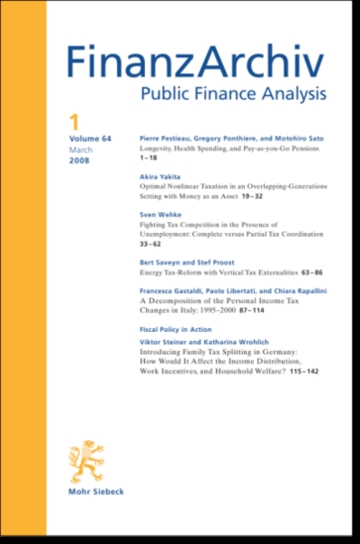
The Efficiency of Local Public-service Production: The Effect of Political Institutions
in: FinanzArchiv, Nr. 2, 2018
Abstract
Reforms replacing municipal cooperations by centralized municipalities often aim at increasing municipal efficiency. Empirical evidence supporting this aim, however, is ambiguous. Our paper analyzes the effect of institutions on municipal efficiency. In particular, we distinguish two archetypal institutional settings, a centralized and a confederal one, and argue that bureaucrats in a centralized setting are able to increase the fiscal residual. Our empirical test case is the German federal state of Saxony-Anhalt. We test the effect of the institutional setup using the bootstrap approach suggested by Simar and Wilson (2007), concluding that a decentralized institutional setting improves the efficiency of municipal production.
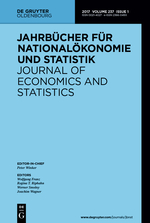
Public Investment Subsidies and Firm Performance – Evidence from Germany
in: Jahrbücher für Nationalökonomie und Statistik, Nr. 2, 2018
Abstract
This paper assesses firm-level effects of the single largest investment subsidy programme in Germany. The analysis considers grants allocated to firms in East German regions over the period 2007 to 2013 under the regional policy scheme Joint Task ‘Improving Regional Economic Structures’ (GRW). We apply a coarsened exact matching (CEM) in combination with a fixed effects difference-in-differences (FEDiD) estimator to identify the effects of programme participation on the treated firms. For the assessment, we use administrative data from the Federal Statistical Office and the Offices of the Länder to demonstrate that this administrative database offers a huge potential for evidence-based policy advice. The results suggest that investment subsidies have a positive impact on different dimensions of firm development, but do not affect overall firm competitiveness. We find positive short- and medium-run effects on firm employment. The effects on firm turnover remain significant and positive only in the medium-run. Gross fixed capital formation responses positively to GRW funding only during the mean implementation period of the projects but becomes insignificant afterwards. Finally, the effect of GRW-funding on labour productivity remains insignificant throughout the whole period of analysis.
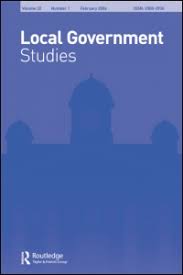
Does Intermunicipal Cooperation Increase Efficiency? A Conditional Metafrontier Approach for the Hessian Wastewater Sector
in: Local Government Studies, Nr. 1, 2018
Abstract
This paper analyses the relationship between intermunicipal cooperation and efficiency of public service provision. Organisational arrangements of public service production, including self-provision, joint provision or contracting, affect incentives and internal transaction costs. Hence, cooperation gains from scale effects need to be balanced against technical inefficiencies. We analyse relative efficiency of wastewater disposal for German municipalities. We employ a conditional analysis in conjunction with a metafrontier approach to calculate relative efficiency measures and technology gap ratios controlling for organisational arrangements and further environmental variables. Jointly providing municipalities and contractor municipalities exhibit lower technical efficiency than self-providing and contracting municipalities. As confirmed by previous research, scale effects from cooperation and contracting apply to small municipalities primarily.
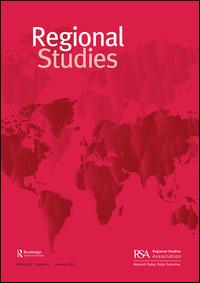
R&D Collaborations and the Role of Proximity
in: Regional Studies, Nr. 12, 2017
Abstract
R&D collaborations and the role of proximity. Regional Studies. This paper explores the impact of proximity measures on knowledge exchange measured by granted research and development (R&D) collaboration projects in German NUTS-3 regions. The results are obtained from a spatial interaction model including eigenvector spatial filters. Not only geographical but also other forms of proximity (technological, organizational and institutional) have a significant influence on the emergence of collaborations. Furthermore, the results suggest interdependences between proximity measures. Nevertheless, the analysis does not show that other forms of proximity may compensate for missing geographical proximity. The results indicate that (subsidized) collaborative innovation activities tend to cluster.
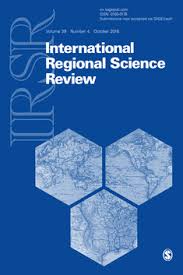
Benchmark Value-added Chains and Regional Clusters in R&D-intensive Industries
in: International Regional Science Review, Nr. 5, 2017
Abstract
Although the phase of euphoria seems to be over, policy makers and regional agencies have maintained their interest in cluster policy. Modern cluster theory provides reasons for positive external effects that may accrue from interaction in a group of proximate enterprises operating in common and related fields. Although there has been some progress in locating clusters, in most cases only limited knowledge on the geographical extent of regional clusters has been established. In the present article, we present a hybrid approach to cluster identification. Dominant buyer–supplier relationships are derived by qualitative input–output analysis from national input–output tables, and potential regional clusters are identified by spatial scanning. This procedure is employed to identify clusters of German research and development-intensive industries. A sensitivity analysis reveals good robustness properties of the hybrid approach with respect to variations in the quantitative cluster composition.
Arbeitspapiere
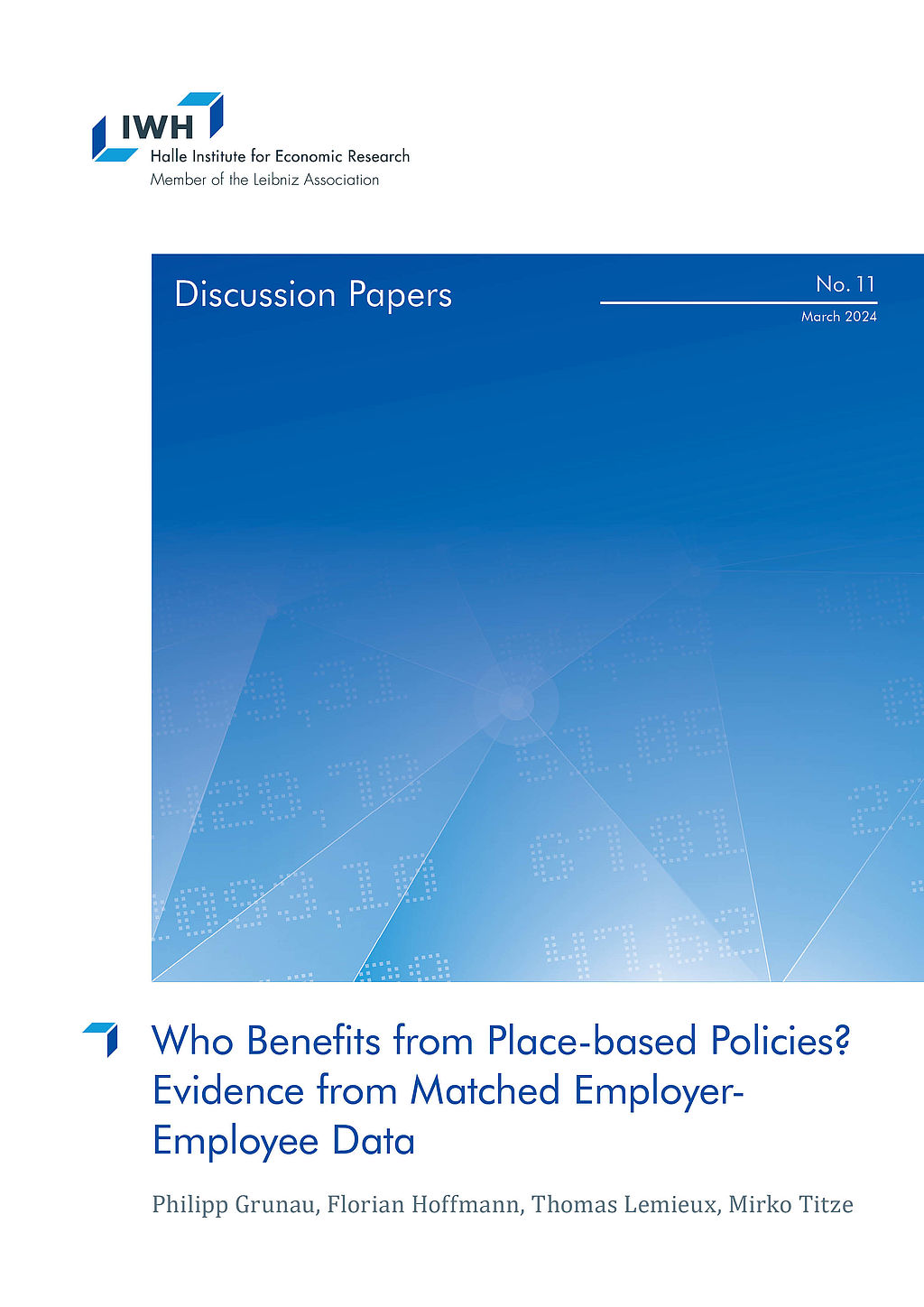
Who Benefits from Place-based Policies? Evidence from Matched Employer-Employee Data
in: IWH Discussion Papers, Nr. 11, 2024
Abstract
We study the wage and employment effects of a German place-based policy using a research design that exploits conditionally exogenous EU-wide rules governing the program parameters at the regional level. The place-based program subsidizes investments to create jobs with a subsidy rate that varies across labor market regions. The analysis uses matched data on the universe of establishments and their employees, establishment-level panel data on program participation, and regional scores that generate spatial discontinuities in program eligibility and generosity. These rich data enable us to study the incidence of the place-based program on different groups of individuals. We find that the program helps establishments create jobs that disproportionately benefit younger and less-educated workers. Funded establishments increase their wages but, unlike employment, wage gains do not persist in the long run. Employment effects estimated at the local area level are slightly larger than establishment-level estimates, suggesting limited spillover effects. Using subsidy rates as an instrumental variable for actual subsidies indicates that it costs approximately EUR 25,000 to create a new job in the economically disadvantaged areas targeted by the program.
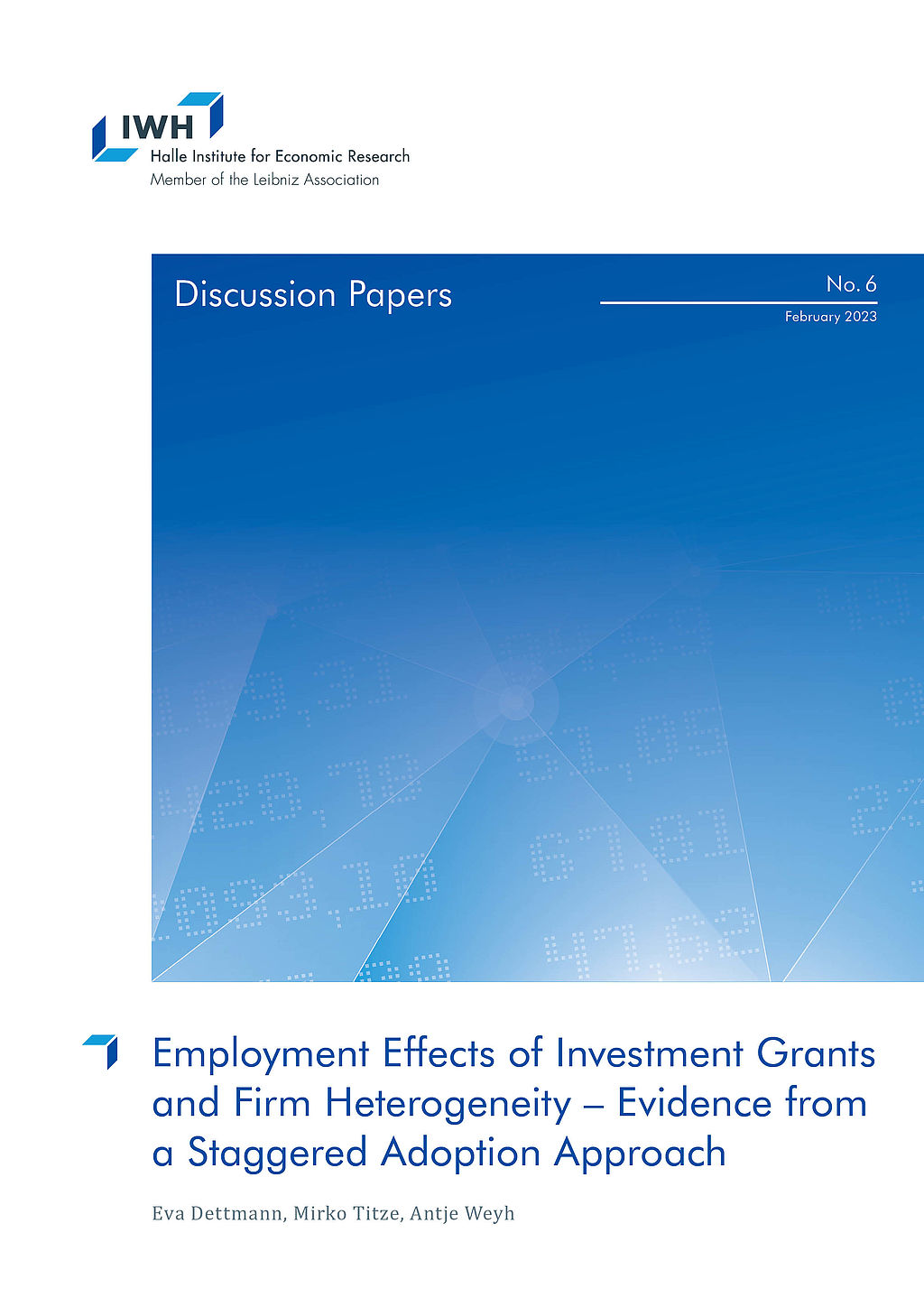
Employment Effects of Investment Grants and Firm Heterogeneity – Evidence from a Staggered Adoption Approach
in: IWH Discussion Papers, Nr. 6, 2023
Abstract
This study estimates the establishment-level employment effects of investment grants in Germany. In addition to the average treatment effect for the treated, we focus on discrimination in the funding rules as potential source of effect heterogeneity. We combine the difference-in-differences approach of Callaway and Sant’Anna (2021) that explicitly models variation in treatment timing with a ties matching at the cohort level. We observe a positive effect of investment grants on employment development in the full sample. The subsample analysis yields strong evidence for effect heterogeneity due to firm characteristics and the economic environment.
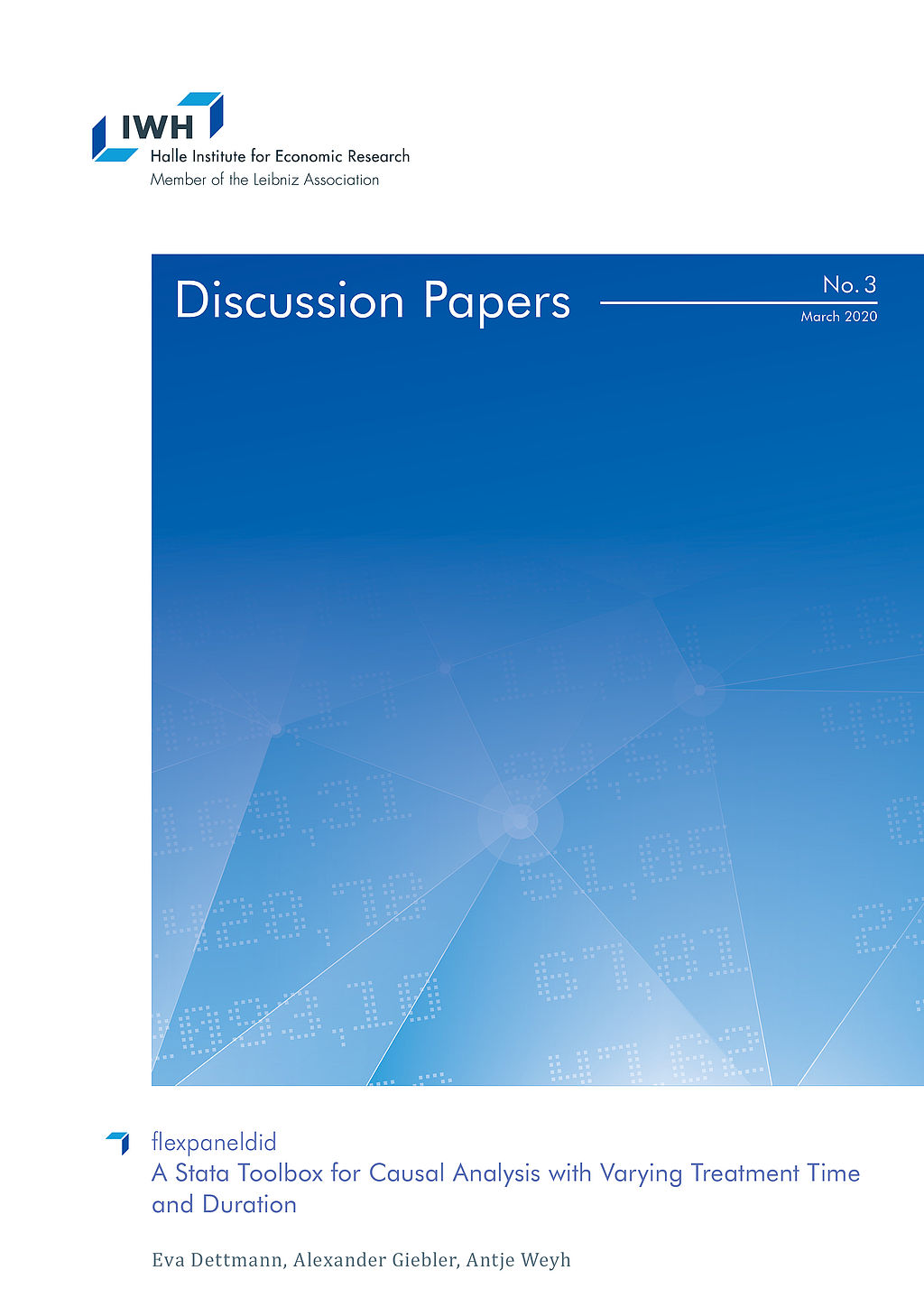
flexpaneldid: A Stata Toolbox for Causal Analysis with Varying Treatment Time and Duration
in: IWH Discussion Papers, Nr. 3, 2020
Abstract
The paper presents a modification of the matching and difference-in-differences approach of Heckman et al. (1998) for the staggered treatment adoption design and a Stata tool that implements the approach. This flexible conditional difference-in-differences approach is particularly useful for causal analysis of treatments with varying start dates and varying treatment durations. Introducing more flexibility enables the user to consider individual treatment periods for the treated observations and thus circumventing problems arising in canonical difference-in-differences approaches. The open-source flexpaneldid toolbox for Stata implements the developed approach and allows comprehensive robustness checks and quality tests. The core of the paper gives comprehensive examples to explain the use of the commands and its options on the basis of a publicly accessible data set.
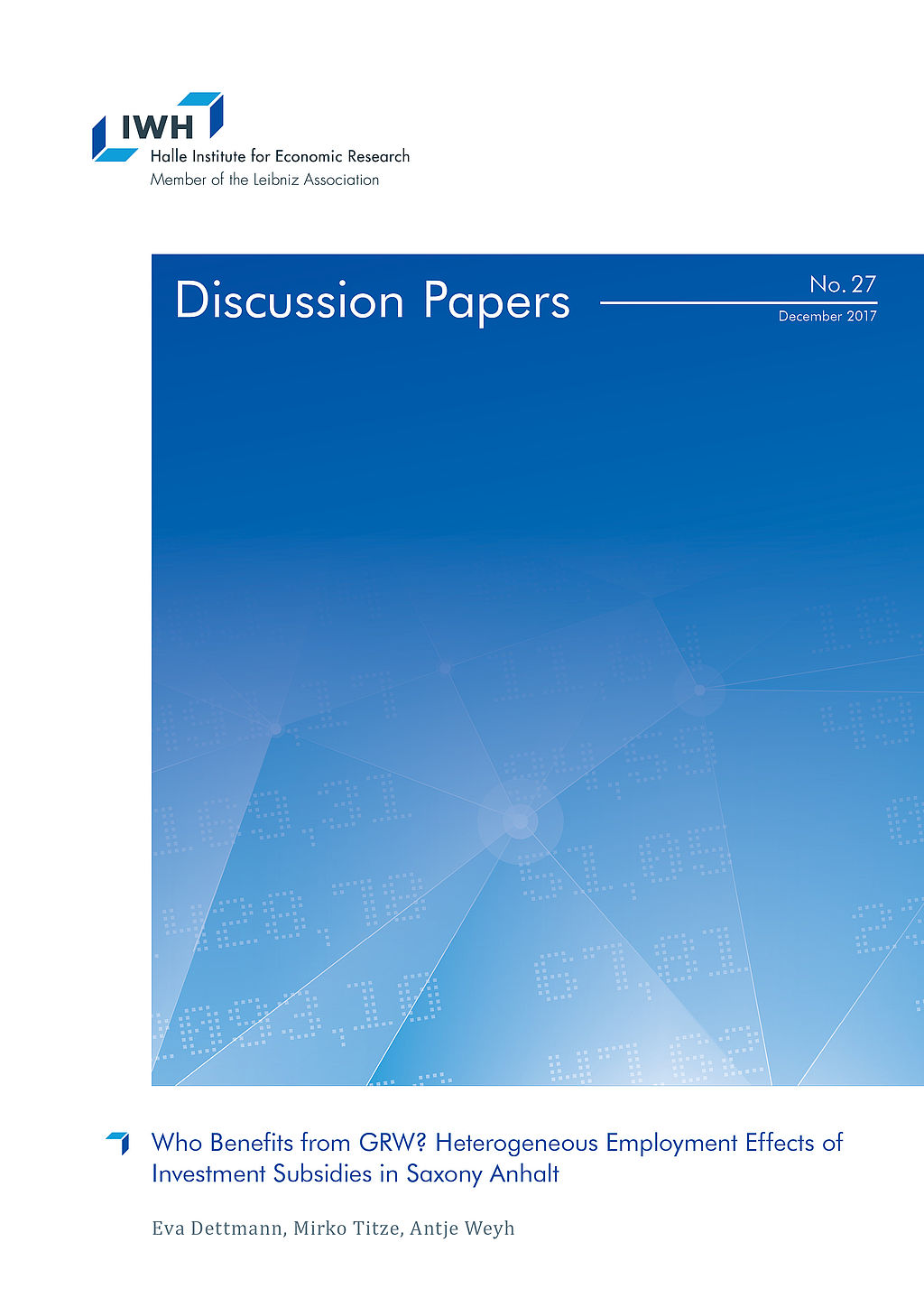
Who Benefits from GRW? Heterogeneous Employment Effects of Investment Subsidies in Saxony Anhalt
in: IWH Discussion Papers, Nr. 27, 2017
Abstract
The paper estimates the plant level employment effects of investment subsidies in one of the most strongly subsidized German Federal States. We analyze the treated plants as a whole, as well as the influence of heterogeneity in plant characteristics and the economic environment. Modifying the standard matching and difference-in-difference approach, we develop a new procedure that is particularly useful for the evaluation of funding programs with individual treatment phases within the funding period. Our data base combines treatment, employment and regional information from different sources. So, we can relate the absolute effects to the amount of the subsidy paid. The results suggest that investment subsidies have a positive influence on the employment development in absolute and standardized figures – with considerable effect heterogeneity.
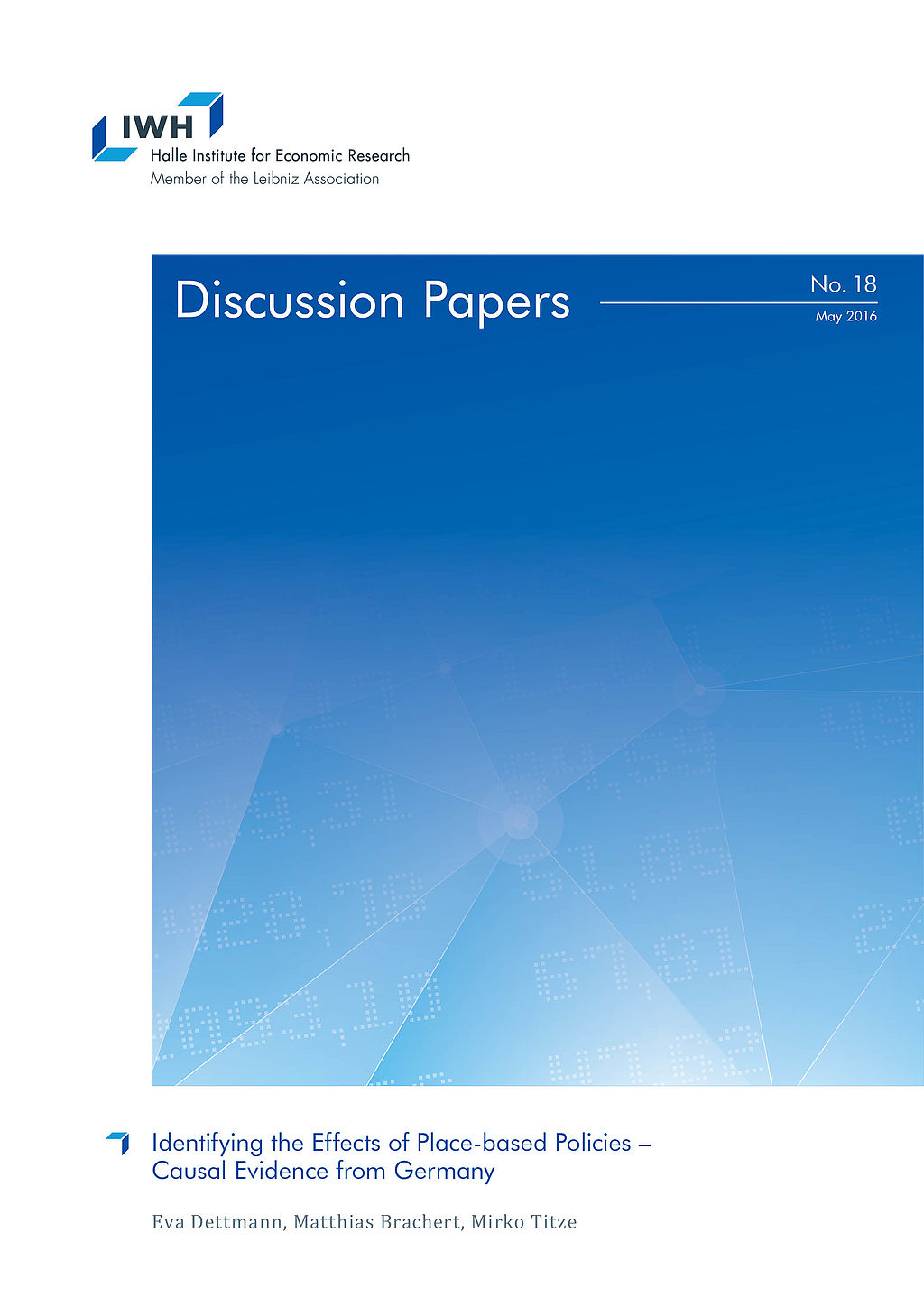
Identifying the Effects of Place-based Policies – Causal Evidence from Germany
in: IWH Discussion Papers, Nr. 18, 2016
Abstract
The German government provides discretionary investment grants to structurally weak regions to reduce regional disparities. We use a regression discontinuity design that exploits an exogenous discrete jump in the probability of receiving investment grants to identify the causal effects of the investment grant on regional outcomes. We find positive effects for regional gross value-added and productivity growth, but no effects for employment and gross wage growth.














